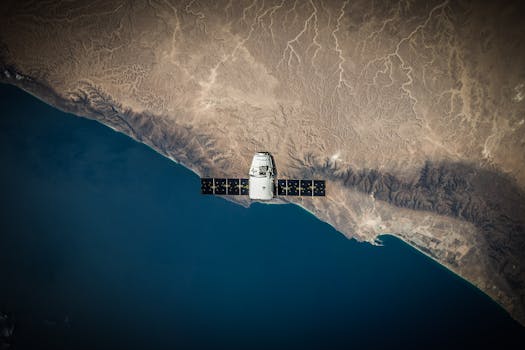MEO Satellites: Revolutionizing Global Connectivity with Medium Earth Orbit Technology

MEO satellites, or medium earth orbit satellites, are a type of satellite that operates in a medium earth orbit, which is approximately 2,000 to 36,000 kilometers above the earth’s surface. MEO satellites have gained significant attention in recent years due to their ability to provide faster and more reliable connections than traditional geostationary earth orbit (GEO) satellites. At the beginning of the MEO satellites era, the focus was on providing global connectivity, and this is still the main focus today.
The first MEO satellites were launched in the 1990s, with the primary goal of providing mobile satellite services. However, with the advancement of technology, MEO satellites have evolved to offer a wide range of services, including broadband internet, navigation, and earth observation. One of the key advantages of MEO satellites is their ability to provide low-latency connections, which is essential for real-time applications such as video conferencing and online gaming.
How MEO Satellites Work
MEO satellites operate in a medium earth orbit, which allows them to complete one orbit around the earth in approximately 6 hours. This is much faster than GEO satellites, which take 24 hours to complete one orbit. The faster orbit of MEO satellites enables them to provide lower latency connections, as signals have to travel shorter distances to reach the satellite and back to earth. Additionally, MEO satellites have a higher elevation angle than GEO satellites, which reduces the impact of signal attenuation and interference.
The constellation of MEO satellites typically consists of multiple satellites that work together to provide global coverage. Each satellite is equipped with a large number of transponders, which are used to transmit and receive signals. The signals are transmitted from the earth station to the satellite, and then from the satellite to the receiving station. The use of multiple satellites and transponders enables MEO satellites to provide high-capacity and high-speed connections.
Applications of MEO Satellites
The unique characteristics of MEO satellites make them ideal for a wide range of applications. Some of the key applications of MEO satellites include:
Broadband internet: MEO satellites can provide high-speed internet connectivity to remote and underserved areas, where traditional fiber-optic connectivity is not available. This is particularly useful for communities in developing countries, where access to internet is limited.
Navigation: MEO satellites can be used to provide navigation services, such as GPS and GLONASS. These services are essential for a wide range of applications, including aviation, maritime, and land transportation.
Earth observation: MEO satellites can be used to observe the earth’s surface, providing valuable data on weather patterns, climate change, and natural disasters. This data can be used to predict weather patterns, monitor climate change, and respond to natural disasters.
Benefits of MEO Satellites
The use of MEO satellites offers several benefits, including:
Faster connections: MEO satellites provide lower latency connections than traditional GEO satellites, making them ideal for real-time applications.
Higher elevation angle: The higher elevation angle of MEO satellites reduces the impact of signal attenuation and interference, providing more reliable connections.
Global coverage: The constellation of MEO satellites can provide global coverage, making them ideal for applications that require widespread connectivity.
Cost-effective: MEO satellites can be more cost-effective than traditional fiber-optic connectivity, particularly for remote and underserved areas.
Challenges and Future Developments
Despite the benefits of MEO satellites, there are several challenges that need to be addressed. Some of the key challenges include:
Interference: The use of MEO satellites can cause interference with other satellite systems, particularly GEO satellites. This interference can be mitigated through the use of advanced signal processing techniques and careful planning of satellite orbits.
Regulatory framework: The regulatory framework for MEO satellites is still evolving, and there is a need for clearer guidelines and standards. This framework should address issues such as spectrum allocation, orbital slots, and licensing requirements.
Technological advancements: The development of new technologies, such as phased array antennas and advanced signal processing, is essential for the continued growth of MEO satellites. These technologies can improve the performance and capacity of MEO satellites, making them more competitive with traditional fiber-optic connectivity.
In conclusion, MEO satellites are revolutionizing the way we communicate and access data globally. With their unique medium earth orbit, they offer faster and more reliable connections than traditional GEO satellites. As the demand for global connectivity continues to grow, MEO satellites are likely to play an increasingly important role in meeting this demand.


